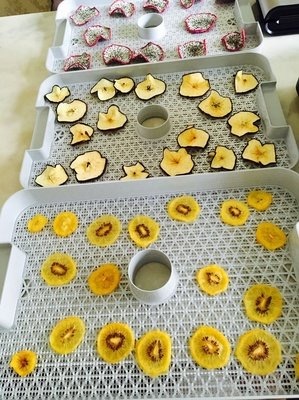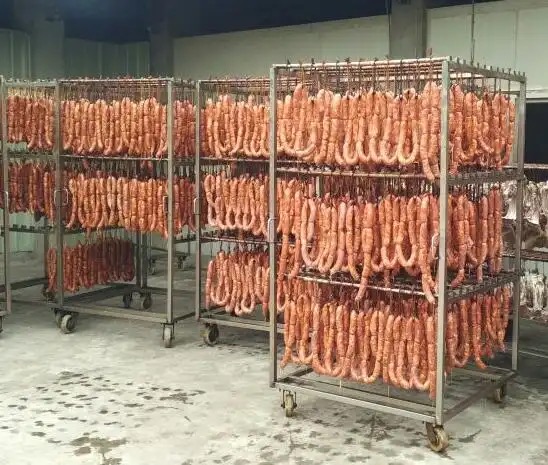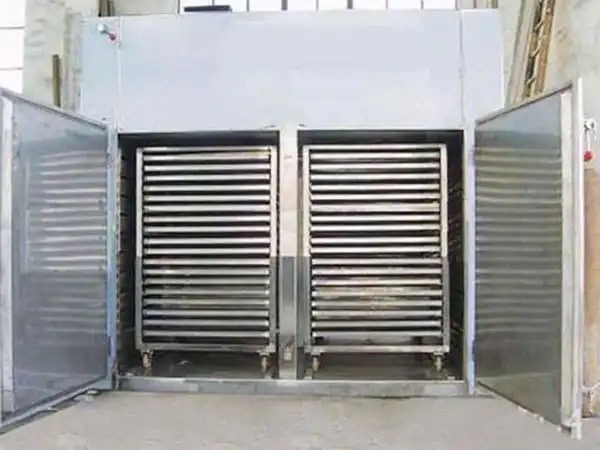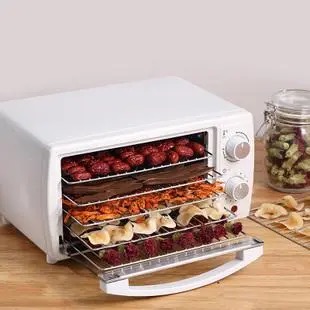
Content Menu
● Introduction
● What is a Dryer with Heat Pump?
>> How Heat Pump Technology Works
● Benefits of Using Heat Pump Dryers for Food
>> Energy Efficiency
>> Preservation of Nutritional Value
>> Versatility in Food Types
>> Space Efficiency
>> Reduced Operating Costs
● Applications of Heat Pump Dryers in Food Industry
>> Fruit Drying
>> Vegetable Drying
>> Herb Drying
>> Meat Drying
● Choosing the Right Heat Pump Dryer
● Maintenance Tips for Heat Pump Dryers
● Conclusion
● Frequently Asked Questions
>> 1. What is a dryer with heat pump?
>> 2. How does a heat pump dryer differ from traditional dryers?
>> 3. What types of foods can be dried using a heat pump dryer?
>> 4. Are heat pump dryers energy-efficient?
>> 5. What should I consider when purchasing a heat pump dryer?
Introduction
In the world of food preservation, drying is one of the oldest and most effective methods. With the advent of modern technology, food dryers have evolved significantly, particularly with the introduction of heat pump technology. This article explores the concept of food dryers, focusing specifically on heat pump dryers, their benefits, and their growing popularity among manufacturers and consumers alike.

What is a Dryer with Heat Pump?
A dryer with heat pump is a sophisticated appliance that uses a heat pump system to dry food products efficiently. Unlike traditional dryers that expel hot air, heat pump dryers recycle air within the system, making them more energy-efficient and environmentally friendly. This technology allows for lower drying temperatures, which helps preserve the nutritional value and flavor of the food.
How Heat Pump Technology Works
Heat pump dryers operate by transferring heat from one place to another using a refrigerant. The process involves several key components:
- Evaporator: Absorbs moisture from the air inside the dryer.
- Compressor: Increases the temperature and pressure of the refrigerant.
- Condenser: Releases heat back into the drying chamber while removing moisture.
- Expansion Valve: Regulates the flow of refrigerant back to the evaporator.
This closed-loop system allows for efficient moisture removal while maintaining a consistent temperature.
Benefits of Using Heat Pump Dryers for Food
Energy Efficiency
One of the standout features of heat pump dryers is their energy efficiency. By recycling air and using lower drying temperatures, these machines consume significantly less energy compared to traditional drying methods. This not only reduces operational costs but also minimizes environmental impact.
For example, while conventional dryers may use up to 5 kWh of energy per load, heat pump dryers can operate on as little as 1.5 kWh per load. This reduction in energy consumption can lead to substantial savings over time, making heat pump dryers an economically viable option for food manufacturers.
Preservation of Nutritional Value
Heat pump dryers operate at lower temperatures, which helps in preserving the nutritional content of food. High temperatures can degrade vitamins and minerals, but with a heat pump dryer, you can achieve optimal drying without compromising quality.
Research has shown that dried fruits processed using heat pump technology retain more vitamins compared to those dried using conventional methods. For instance, vitamin C levels in dried apples can be significantly higher when dried at lower temperatures typical of heat pump operations.

Versatility in Food Types
Heat pump dryers are suitable for a wide range of food products, including fruits, vegetables, herbs, and meats. This versatility makes them an ideal choice for manufacturers looking to diversify their product offerings.
- Fruits: Apples, bananas, strawberries
- Vegetables: Carrots, peas, bell peppers
- Herbs: Basil, oregano, thyme
- Meats: Jerky production from beef or turkey
The ability to dry various types of foods without altering their taste or texture is a significant advantage for businesses aiming to produce high-quality dried products.
Space Efficiency
Many heat pump dryers are designed to be compact and stackable, making them suitable for facilities with limited space. Their ability to function without external ventilation also adds to their convenience.
This feature is particularly beneficial for small-scale producers or those operating in urban environments where space is at a premium. The compact design allows for easy integration into existing production lines without requiring extensive modifications.
Reduced Operating Costs
While the initial investment in a heat pump dryer may be higher than traditional models, the long-term savings on energy bills and maintenance costs make them a cost-effective solution for food manufacturers.
Additionally, many modern heat pump dryers come equipped with advanced controls that optimize drying cycles based on humidity levels and product type. This automation reduces labor costs and minimizes human error during operation.
Applications of Heat Pump Dryers in Food Industry
Fruit Drying
Heat pump dryers excel in drying fruits such as apples, bananas, and berries. The gentle drying process retains flavor and texture while extending shelf life.
For instance, when drying apples using a heat pump dryer at 60°C instead of 70°C typically used in conventional methods, producers can achieve a better color retention and taste profile in the final product.
Vegetable Drying
Vegetables like carrots, peas, and bell peppers benefit from heat pump drying as it preserves their color and nutritional value. The controlled environment prevents over-drying and ensures that vegetables maintain their vibrant colors and essential nutrients.
Moreover, dried vegetables can be rehydrated easily when cooked later on, making them versatile ingredients in various culinary applications.
Herb Drying
Herbs are delicate and require careful handling during drying. Heat pump technology provides a controlled environment that prevents over-drying and loss of essential oils.
For example, basil dried using traditional methods often loses its aromatic properties; however, when dried at lower temperatures with a heat pump dryer, it retains its flavor profile much better.
Meat Drying
For manufacturers producing jerky or dried meats, heat pump dryers offer precise temperature control necessary for safe drying without compromising taste.
The ability to maintain lower temperatures reduces the risk of cooking meat during the drying process while still effectively removing moisture—crucial for preventing spoilage.
Choosing the Right Heat Pump Dryer
When selecting a heat pump dryer for your food processing needs, consider the following factors:
- Capacity: Choose a model that meets your production volume requirements.
- Energy Rating: Look for energy-efficient models to maximize savings.
- Temperature Control: Ensure that the dryer has adjustable temperature settings for different food types.
- Ease of Use: User-friendly controls can enhance operational efficiency.
- Maintenance Requirements: Consider models that are easy to clean and maintain.
Additionally, it's beneficial to look into customer reviews and case studies from other businesses that have implemented similar equipment to gauge performance reliability.
Maintenance Tips for Heat Pump Dryers
To ensure longevity and optimal performance from your heat pump dryer, regular maintenance is essential:
1. Clean Filters Regularly: Dust and debris can accumulate in filters; cleaning them regularly ensures efficient airflow.
2. Inspect Seals: Check door seals periodically for wear or damage; proper sealing is crucial for maintaining efficiency.
3. Monitor Performance: Keep track of drying times and energy consumption; any significant changes may indicate maintenance needs.
4. Schedule Professional Servicing: Consider annual professional servicing to address any underlying issues before they become major problems.
By adhering to these maintenance practices, you can extend the life of your equipment while ensuring it operates at peak efficiency.
Conclusion
Heat pump dryers represent a significant advancement in food drying technology. Their energy efficiency, ability to preserve nutritional value, versatility in applications, and reduced operating costs make them an attractive option for food manufacturers worldwide. As demand for sustainable practices grows in the food industry, investing in a heat pump dryer could be a strategic move towards enhancing product quality while minimizing environmental impact.
With their numerous benefits and applications across various food types—from fruits to meats—heat pump dryers are poised to become an essential tool in modern food processing facilities.

Frequently Asked Questions
1. What is a dryer with heat pump?
A dryer with heat pump is an appliance that uses heat pump technology to dry food products efficiently by recycling air within the system rather than expelling it.
2. How does a heat pump dryer differ from traditional dryers?
Heat pump dryers operate at lower temperatures and recycle air within the system, making them more energy-efficient compared to traditional dryers that expel hot air.
3. What types of foods can be dried using a heat pump dryer?
Heat pump dryers can be used to dry various foods including fruits, vegetables, herbs, and meats effectively while preserving their nutritional value.
4. Are heat pump dryers energy-efficient?
Yes, heat pump dryers are highly energy-efficient due to their ability to recycle air and operate at lower temperatures compared to conventional drying methods.
5. What should I consider when purchasing a heat pump dryer?
When purchasing a heat pump dryer, consider factors such as capacity, energy rating, temperature control options, ease of use, and maintenance requirements.












